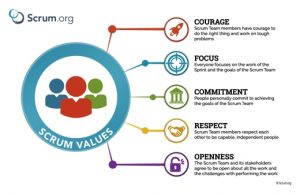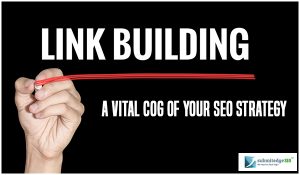Unexpectedly losing a great employee is one of the most costly events that can happen to an organization. What’s worse, the departure of even one or two top-performers or a charismatic leader can trigger a spiral of additional turnover.
Unlike other major disasters, a turnover spiral is often avoidable, and protecting against it might be easier than you think.
The key to avoiding a turnover event is getting ahead of it before it’s triggered.
How do you do that?
Start with the lowest hanging fruit: common turnover contributors.
Communication and Dialogue

This isn’t secret knowledge. It’s one of the most basic fundamentals of good leadership and management, but that doesn’t mean everyone’s good at it.
If there was one area that is crucial to get right, it’s communication and dialogue — yet both are so frequently broken. Technically, they’re two separate issues, but they’re so interrelated you can’t really get one right without the other.
Communication is what you’re discussing; dialogue is how you go about discussing it.
Think about it this way — if you’re communicating regularly, but the dialogue within that communication is toxic, it’s not going to benefit anyone. You’re drawing nearer to a turnover event with every word.
Alternatively, your dialogue is good — the discussions you have are amiable and enjoyable for both parties — but you’re never covering the crucial issues.
It takes effort to cultivate an environment that supports frequent, effective, and productive communication, but that investment pays big dividends.
Entrepreneur published a resource “How to Create a Winning Employee Retention Strategy” that describes the impact effective communication can have on employees:
“Properly done, communication with your staff will provide you with the insights you need in order to know how your employees feel about working for your business.”
It’s not just about knowing the tactical details of what’s going on. Good communication is your opportunity to gain the additional insight you need to stay ahead of turnover.
So how do you build that environment?
Forget “My door is always open” policies if you truly want to support effective communication. Although it may work for some employees, there’s a much larger contingent who’ll simply refuse to cross that threshold.
It’s not out of meekness, or because of anti-social tendencies that they’re not going to step in. There are a number of reasons open-door policies fail.
Your team may simply be busy, or consider you too busy to approach. Even if an outgoing employee does join you in the office for a chat, it’s not a guarantee you’re going to hear the things you need to hear.
When I Work’s Chad Halvorson explained this phenomenon in his article on their blog:
“Often time people feel they can’t really express themselves for fear of embarrassment or reprisal—even with open door policies in place. Instead, managers and employers need to actively create an open rapport with employees.”
The key to sparking these crucial conversations is to bake them into everyday life in your organization. Carve out time for open communication at a regular cadence, and prioritize it, so that you’re not constantly rescheduling over it.
One on one meetings are a great format for productive communication between managers and the people they lead. If you’re interested in implementing them, we recently published a great guide to getting the most out of one on one meetings.
Wellness

Employees who are healthy in mind and body have the necessary bandwidth to produce more and better work. It’s really that simple.
Think about it from a psychological perspective. Maslow’s hierarchy of needs is a great way to illustrate the importance of both physical and mental well being, not just as human beings, but specifically in a work context.

As leaders, it’s our job to help employees achieve self-actualization — that highest level in the hierarchy where a person fully realizes their potential, and operates in a manner that fulfills it.
It’s beneficial for everyone involved.
When an employee’s basic physiological needs aren’t being fulfilled, it’s not possible for them to reach higher levels of performance because their attention will always be at least to some degree focused on fulfilling their most basic needs.
Think about it this way: if an employee is sick at work, but should be in the doctor’s office, they’re not going to be operating at their full potential. It’s also putting the fulfillment of physiological needs (and as a result, higher-level needs) for other employees at risk.
Wellness goes beyond a basic health care plan or sick leave.
If an employee pulled an all-nighter to get a project done by its deadline, their failure to fulfill that basic physiological need of sleep will impact the quality and output of their work until it’s taken care of. That impact is felt by everyone they work with.
Stress is another huge factor impacting employee wellness, and organizational performance. According to the World Health Organization, stress cost US enterprises over 300 billion dollars.
That might sound like a lot, but if you’re not convinced of the cost yet, our friends at Officevibe shared some more staggering statistics on corporate wellness.
It may feel as though you work in a high-stress industry, where stress is natural – the problem is that the kind of stress we see in professional settings often isn’t natural.
Enduring constant stress can be incredibly punishing, not only mentally, but physically as well. When we’re stressed, it causes our body to elicit a fight-or-flight response.
Our body’s natural stress response is a compromise, and it’s kind of a big one.
The functionality of other important life support systems are impacted by this response — sometimes irreversibly — with the assumed short-term benefit of outrunning a predator, or finding a meal.
Although you may work in what is considered a ‘stressful’ industry, and stress is never entirely avoidable, there are always tools to provide relief from that stress and soften the impact it has.
So what are some easy ways to support well being within your team?
Start by banishing overwork — whether it’s happening through managerial pressure, or individual pressure to succeed. Avoiding overwork is one of the core competencies of a good manager, and it can have a huge effect on several areas of employee wellness.
If they’re thinking “I can’t take a sick day because It’ll cut into my vacation,” or “I have to come in because if I don’t, nothing will get done and everything will fall apart,” it’s time to re-think your approach to employee wellness.
Help employees manage stress through thoughtful project management, and give them the tools they need when stress is unavoidable. Jon Kabat-Zinn gave a great talk at the Google campus on the benefits of mindfulness and stress reduction at work:
Growth
Want an easy way to keep employees from leaving? Make sure they don’t outgrow your organization. If a top performer hits the ceiling in one year, they’re going to find another place to contribute their time and skills.
Nobody wants to stay in a dead-end job.
Learning opportunities are a great way to help your team grow and thrive. As an added benefit, the results of that learning will benefit the organization.
Don’t get caught up in the mentality of “If I pay for my employees to attend courses and seminars, I’m just subsidizing training costs for their next employer.”
Think of it as an investment in human capital. And the best part? You actually have the power to directly influence your returns on this investment.
Advancement opportunities can make or break retention. If an employee is genuinely ready to take the next step in their career path, find ways you can help them advance internally.
If there’s no room for a top performer to move forward, they’re liable to find another path. It’s not fair to expect them not to.
If your organization’s environment gives them enough room to grow and evolve, while providing the tools they need to do that as effectively as possible, they’ll be much less likely to leave.
Purpose

Purposeful work is a major factor in retention — especially in the highly competitive modern talent landscape.
How important could it really be?
A study of graduating university students showed that 2/3 felt making a difference through their next job was a priority. 45 percent of those students reported they’d even take a pay cut to do so.
Here’s the key factor many people miss: there are no “purpose professions.”
There are some careers whose purpose is clearer and more present, but it’s possible to find purpose in any career. Sometimes all it takes is someone else highlighting the importance in what you do.
Whether you’re the executive director of a non-profit organization, or a sushi master like Jiro Ono who has been perfecting his craft over decades, your work is purposeful, and it’s meaningful to others.
Being able to help employees to see the purpose in their work, is a massive competitive advantage, and it’s an advantage available to everyone.
In a recent interview we did together, Imperative’s Arthur Woods went into more detail on the importance of purposeful work.
How do you instil a sense of purpose?
Show an employee exactly how their work impacts their team, and why their contributions matter. Take a step further and illustrate the importance of that same work, as its effects reverberate across the organization.
Take another step back and illustrate the purpose behind organizational goals, and why it matters that an employee’s contributions are pushing the team further towards achieving those goals.
Finally, take a step back and illustrate how through their efforts, they’re positively impacting the world around them.
Camaraderie

The people you work with, and the relationships you build among them can be an incredibly strong employee retention factor.
Why is that?
According to The TINYpulse 2015 Employee Engagement & Organizational Culture Report, colleagues were cited as the #1 reason respondents love their job.
When they asked all these respondents what it was that made them want to give their all, the answer wasn’t money, or prestige. It was peers.
The deep sense of camaraderie you get from a team that is dedicated to supporting one another is extraordinarily powerful.
“70 percent of people state work friendships as the most crucial element to a happy working life.”
So how do you provide an environment that supports the founding and strengthening of those friendships?
There are a lot of ways to do it, but perhaps the most important factor is culture.
No matter how much effort you expend, or how well-designed the work environment, it all starts with culture. Start by working to develop a culture of mutual respect and appreciation, because it’s nearly impossible to build great working relationships within a toxic organizational culture.
In addition to a culture of mutual respect and appreciation, providing a physical environment conducive to relationship building can go a long way.
Make sure there are physical areas and a cultural atmosphere that support collaboration.
The emotional environment you develop is incredibly important. Each member of the team should feel a sense of psychological safety — that their ideas will be heard, considered thoughtfully, and never ridiculed.
They should feel comfortable in their environment, and not feel like they’re “breaking the rules” by interacting with their colleagues.
Recognition

Showing appreciation for an employee’s unique contributions is a great way to keep them engaged and inspired to continue. Failing to recognize employees for the work they do often produces the opposite effect.
Frequency is a major factor in the effectiveness of employee recognition.
If recognition is given once or even a few times each year, there are doubtless many contributions that have been made, but have not been recognized.
Specificity: it’s not enough to tell someone “good job.” The more specific the recognition, the more impactful it will be, both to the receiver, and for the organization as a whole.
Why is that?
It’s important for employees to know exactly what they did that was commendable, and why it was such a valuable contribution.
Recognition that is given, tied within a framework of individual purpose and organizational goals has a few major advantages.
Many employees struggle to understand what success looks like in their organization. Specific recognition tied to organizational goals helps them to understand exactly what they need to do — what types of contributions they need to make to the team to be successful in their organizational role.
It’s also an opportunity to illuminate the purpose behind that work. It may seem obvious to someone at a 30,000 foot perspective, but it’s frequently challenging to see, especially at the ground-level.
Follow-through
None of these strategies are going to be worth attempting without follow-through. In fact, poor follow-through can be worse than doing nothing at all.
The difference between lip service and action are obvious, and can be painfully obvious when it comes to something as important as a person’s daily work environment.
You don’t have to succeed with every initiative — that’s an unsustainable standard to be held to — but just like grade school math, you do need to show your work.
In Conclusion:
Employee turnover is extraordinarily costly, but there are many ways to get in front of it, and work to resolve the issues that cause it. Thoughtfully approaching these few areas we’ve discussed can make the difference between an organization that is a talent magnet, and one that is suffering high employee turnover.
Business & Finance Articles on Business 2 Community
(192)







